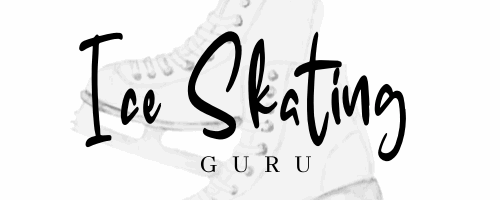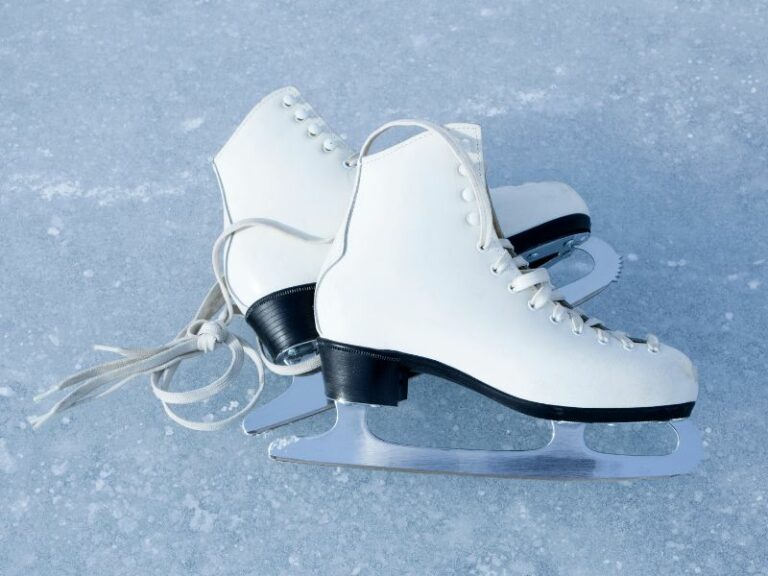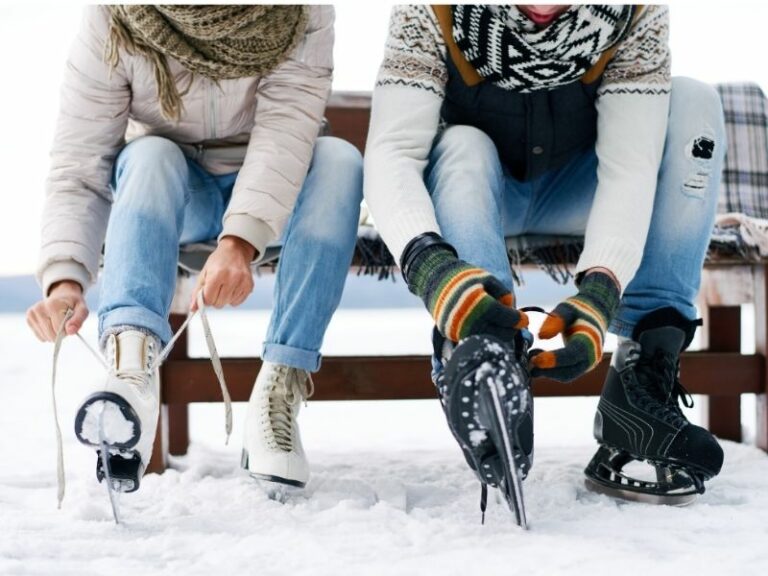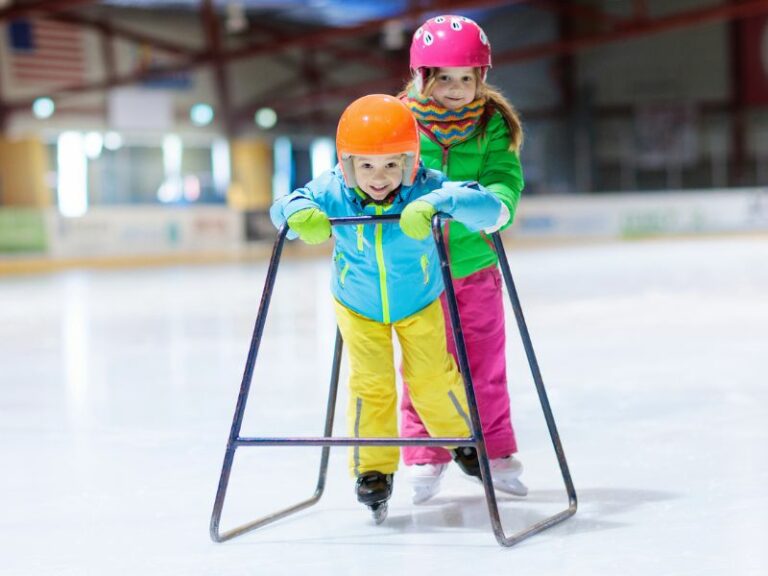How Many Calories Does Ice Skating Burn?
There is no doubt that ice skating is a fun activity, but many people may not realize that it can also be a great workout. When you ice skate, you are engaging your feet and ankles in a way that helps to strengthen muscles and improve balance. Even when you are not on the ice, you will find that your balance improves. So how many calories does ice skating burn?
Ice skating can provide an excellent workout for people of all ages. It helps to develop balance as well as other muscles in the feet and ankles. In addition, the improved balance you gain from skating carries over into everyday activities off the ice.
So next time you hit the rink, go ahead and enjoy yourself—you’re getting in a good workout at the same time!
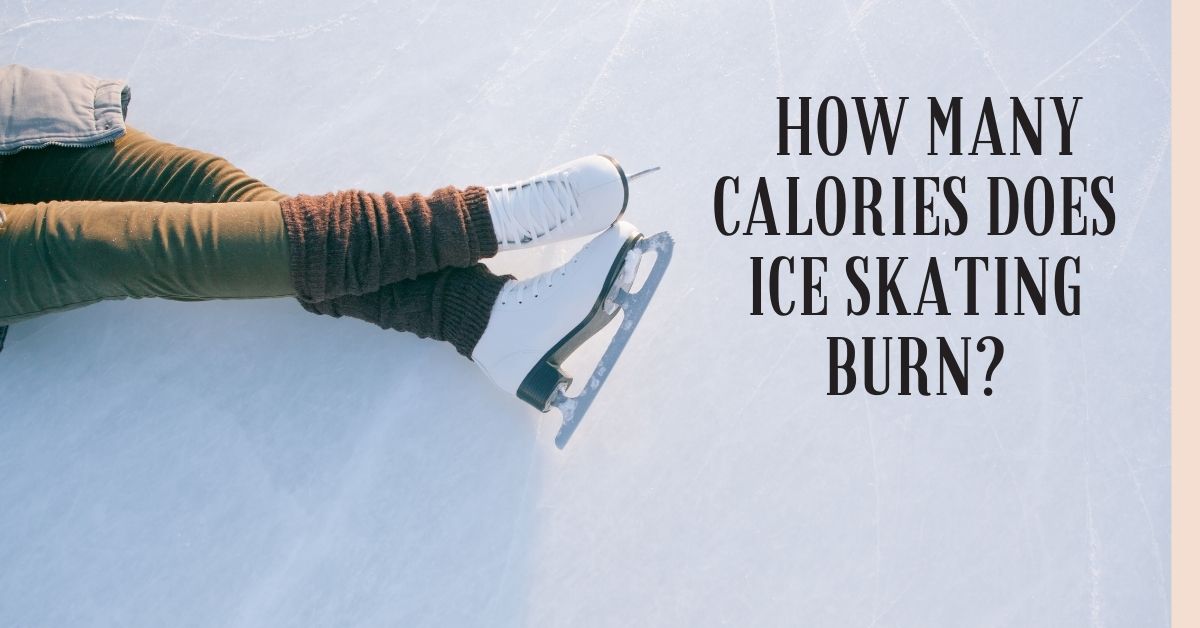
This post may contain affiliate links. Please read my Affiliate Disclosure for more information
MORE ICE SKATING FACTS
Is Ice Skating Dangerous? (How to Stay Safe)
Does Ice Skating Burn Calories?
All forms of exercise burns calories and ice skating is no exception!
How many calories do you burn Ice Skating?
An hour of ice skating burns around 600-800 calories making it a great way to get fit and lose weight. The number of calories burned while ice skating varies depending on the intensity and duration.
The number of calories burned with activities such as speed skating and ice hockey is proportional to their intensity. The harder you skate, the more calories you burn.
Burned calories (KCAL)with Ice skating
When you ice skate, you burn a lot of calories! In fact, , on average a person burns about 650-850 calories per hour skating. This number can vary depending on a person’s weight and duration and intensity of activity.
How do we calculate the amount of calories burned with Ice skating?

Calories & Sports
The amount of calories burned is calculated with the following equation: (The number of minutes you spend doing activity) x (Your metabolic rate in kcal/minute).
The amount of calories burned is directly proportional to the amount of time spent doing activity. This means that, whether you’re a professional athlete or just someone looking to get in shape, you’ll be able to calculate how many calories you’ve burned on a given day by using this equation.
Calories & Heart Rate
Calories are units of energy that the body uses to perform all its activities. The amount of calories burned depends on the intensity and duration of the activity.
A metabolic equivalent (MET) is a unit of measurement for energy expenditure. It is defined as the amount of energy expended by a person sitting at rest. One MET is equivalent to 3.5 ml O2/kg/min, or 1 calorie per minute.
Ice skating burns 9 METs, which is about 650 calories per hour .
Ice skating is a good way to improve fitness and health because it improves balance , coordination, flexibility , agility , muscle strength .
Daily Calorie Needs
In order to maintain a healthy weight, it’s important to know how many calories your body needs on a daily basis. This amount can vary depending on your age, sex, and activity level. However, as a general rule of thumb, the average person needs around 2000-2500 calories per day.
Ice skating is in the top 43% of activities ranked by calories burned. So, if you’re an avid ice skater, you can expect to burn more than the average person – about 136 calories per minute! Keep in mind that this number will vary depending on your weight and intensity level.
Why Does Ice Skating Burn So Many Calories?

If you are surprised by how many calories you can burn just by gliding and having fun on the ice, you are not alone. Ice Skating doesn’t always feel as strenuous as other sports but it offers a great way to burn calories.
Some of the reasons why ice skating burns so many calories:
You are using lots of different muscles
Skating uses your whole body, from your arms, to your legs and feet and especially your core for balance. The simple fact of staying balanced on your skates helps you to burn calories while ice skating.
You are exercising in the cold
According to a recent study, exercising in the cold burns more calories than exercising in a warm climate. In the study,53 healthy, un-acclimated volunteers (37 males and 16 females)—took part in 12-16 week-long outdoor education courses in moderately high altitude temperate and cold climates in the western United States.
When researchers looked at the results, the men in the study burned almost 1000 more calories a day in colder weather while the women were burning around 800 more calories a day.
Hidden calorie burning from ice skating
The calorie-burning effects of ice skating are not limited to during the workout. In fact, you can burn calories long after you’ve left the rink!
How much you weigh plays a big role in how many calories you burn.
Heavier individuals will naturally burn more calories while ice skating than those who weigh less. But even if you’re carrying a few extra pounds, don’t worry – muscle mass built while ice skating can also contribute to more calories burned on top of your weight loss goals.
Ice skating burns a lot of calories due to the muscle mass increase. Ice skating has what is called “afterburn.”
This means that your body continues to expend energy (calories) after the activity has ended as it returns to its pre-activity state. So although it’s hard to quantify in terms of an exact number, we do know that 1% or more of your total calorie expenditure for the day can come from post-activity caloric burn related to ice skating .
Ways to burn more calories with ice skating
There are many ways to burn more calories while ice skating. For example, you can increase your speed or make the weight you have to carry around heavier. Additionally, the afterburn effect can be achieved by making the weight you have to carry around heavier.
If you want to really burn more calories ice skating – skate more!
How Many Calories Does Ice Skating Burn – FAQS

Is ice skating considered exercise?
There is no doubt that ice skating is a fun activity, but many people may not realize that it can also be a great workout. When you ice skate, you are engaging your feet and ankles in a way that helps to strengthen muscles and improve balance. Even when you are not on the ice, you will find that your balance improves.
Ice skating can provide an excellent workout for people of all ages. It helps to develop balance as well as other muscles in the feet and ankles. In addition, the improved balance you gain from skating carries over into everyday activities off the ice. So next time you hit the rink, go ahead and enjoy yourself—you’re getting in a good workout at the same time!
Is skating a good workout?
Skating is a great cardio workout that can also boost your upper body muscles. While it doesn’t necessarily make you breathless like running does, it is a good workout that you can do consistently to see results.
Skating also has the added benefit of being fun and social, so it’s a great option if you’re looking for something new to try!
Make sure to do some exercises specifically for building muscle on top of your ice skating workouts.
This will help you see even better results and burn more calories day in, day out. And don’t forget to eat healthy foods! The extra muscle mass gained from ice skating will help you burn more calories naturally, without having to put in as much effort.
How many calories does 45 minutes of ice skating burn?
45 minutes of ice skating can burn around 400 calories. This number varies depending on your weight and how long you skate for, but it’s a good estimate to keep in mind!
Speed skating can burn around 1000 calories an hour depending on the intensity of the session.
What burns more calories ice skating or walking?
Many people might wonder if ice skating burns more calories than walking. The answer is yes-ice skating does burn more calories. Skating for one hour will burn 9 times more calories than sitting or inactive, while walking for one hour only burns 3 times more calories.
That means that the average person who skates for an hour will burn 648 calories, while the average person who walks for an hour will only burn 193. Keep in mind that these numbers may vary depending on a person’s weight and intensity level of activity.
So next time you’re watching TV and don’t want to get up and move around, try ice skating instead! You’ll be burning more calories and having a good time too
Calories Burned Ice Skating vs Running
According to Burned Calories, while ice skating burns around 600 calories an hour if you weight 180 lbs, running 7mph will burn 800 calories an hour so running slightly has the edge over skating when it comes to burning calories.
Calories burned ice skating slowly
Even skating slowly burns an awesome amount of calories – around 380 an hour. This is about how much you will burn during a leisurely recreational skate around the rink with friends – a great alternative to sitting in a cafe for a gossip!
What does skating do for your body?
Skating is a great form of exercise that works out your lower body. Not only does skating help to tone and shape your legs, but it’s also good for your heart! Skating regularly can improve your cardiovascular health and reduce your risk of heart disease. So if you’re looking for a fun way to stay in shape, give skating a try!
What muscles do you use while ice skating?
When you think of ice skating, the first thing that comes to mind is probably a graceful woman or man on the ice. What you may not realize is that ice skating works the muscles in your back, pelvic floor, and legs. In fact, it’s a low impact exercise that’s good for your joints.
If you have ever watched figure skating on TV, you’ll know that skaters have some of the most developed glute muscles in sport.
The primary muscles used while ice skating are the gluteus maximus muscle (the buttocks), the iliopsoas muscle (a hip flexor), and the quadratus lumborum muscle (one of the muscles in your lower back). In fact, these are some of the same muscles used while running.
But unlike running, where your feet do most of the work, ice skating requires that you use your knees to gain more control. So if you’re looking for a workout that will tone your bum and thighs, look no further than ice skating!
The calorie burn also depends on your speed. If you skate slowly,, you’ll burn 387 calories per hour. But if you skate quickly – like when chasing a puck or playing hockey – then you’ll burn 633 calories per hour.
And don’t forget: increasing the strength of smaller stabilizer muscles will help you in other activities like running, skiing and yoga!
So lace up those skates and get ready to work those muscles!

